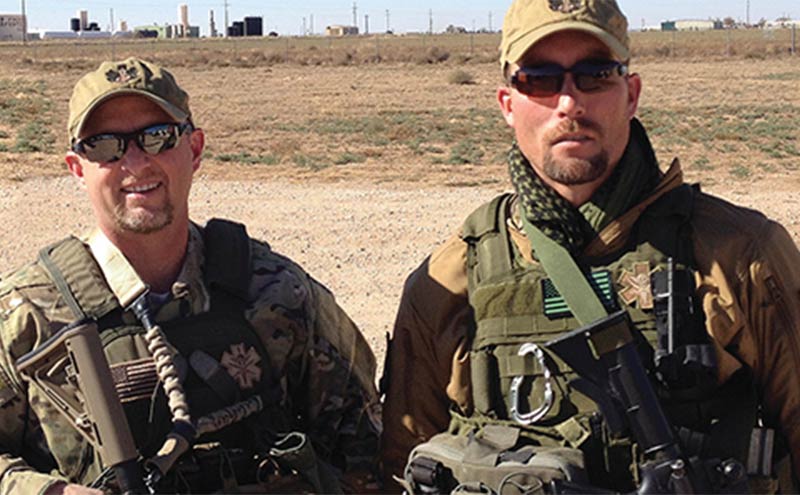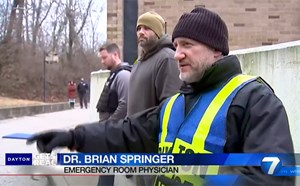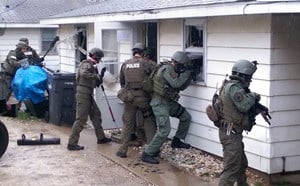
To Be Or Not To Be – Should Tactical EMS Providers Be Armed?

A debate as old as the field of Tactical EMS (TEMS) itself, the question has long been “should TEMS providers be armed?”
Recently, there have been proposed or passed bills from multiple states, including Texas, Kansas, Ohio, and Virginia which allow or would allow for civilian EMS providers to be armed during routine 911 services. Proponents of these bills argue that the EMS providers are often predisposed to violence and are vulnerable and exposed, with no ability to protect themselves otherwise.
There have been many recent media accounts where civilian EMS providers were seriously injured or killed in the line of duty from gunshot wounds, stabbings, or other types of aggravated assault or bodily injury. If this is happening to our 911 EMS providers, how much more should we be worried about our TEMS providers who are routinely closer to such violence and deadly weapons?
Before we continue this discussion, we must note that this debate does not include sworn law enforcement officers (LEO) who double as TEMS providers. As a law-enforcement officer, this is a no brainer. If you are on duty as a LEO, even if you are serving a TEMS role, you must and should be armed. However, it should be noted that this model is not very common across the tactical law-enforcement environment. Also, this discussion does not include rescue task force medics who are provided significant force protection while they provide rapid threat care and evacuation. There is no role for arming those EMS providers, since their primary goal is the treatment, stabilization, and evacuation of the injured.
The more common scenario is the civilian EMS provider who receives additional TEMS training and provides TEMS services to a local or regional tactical law enforcement team. They may receive additional tactical operator training to supplement the TEMS work they provide. This ensures that the TEMS provider is more easily deployable with their team, can understand the team’s dynamics and movements, and can more easily understand the different roles that each of their tactical operators perform.
For our discussion, we will focus our debate on these civilian, non-sworn TEMS providers with presumably additional tactical operator training, but who are not law-enforcement officers. Let’s take a look at some of the hotly debated arguments of arming these civilian tactical EMS providers.
To Be Armed
- “If they are in the hot zone, they should be able to defend themselves and wounded officers or civilians.”
- “The LEO’s can spend more time protecting innocent civilians and bystanders and attempting to detain or neutralize the target rather than protecting their tactical EMS provider.”
- “If they carry their own weapon and are well-trained, they can also help to secure a downed officer’s weapon and free up another officer from doing it."
Not To Be Armed
- “A TEMS provider has a moral and ethical obligation to ‘first, do no harm’.”
- “If a TEMS provider shoots someone, they will face seriously legal battles as a civilian.“
- “Why would you need to be armed when you are surrounded with many armed and well-trained LEO’s who can provide force protection?”
- “TEMS providers don’t have the same training with weapons and other de-escalation techniques”
- “TEMS providers are usually not mentally prepared to ‘neutralize the threat’ in the same manner as their sworn-LEO counterparts”
- “A TEMS provider will either have two hands on the patient or two hands on their weapon, but can’t do both at the same time very well.”
Don’t mistake the number of arguments above as a measure of which one is correct. Ultimately, the decision to arm a civilian TEMS provider should be at the discretion of each individual law enforcement agency in conjunction with the individual TEMS provider. The decision to arm a TEMS provider is not without risk. Additionally, many believe that a TEMS provider would rarely be in a scenario where they would need to discharge their weapon if everyone is performing their roles correctly.
In consideration of whether or not to arm TEMS providers, your agency and TEMS providers should be aware of local and state regulations, aware of the risks, and ask the following questions:
- Will the TEMS provider be armed for “self-defense” or the “defense of others”?
- Will the TEMS provider be armed for “crime mitigation” or “crime prevention”?
- Will your agency write protocols for when/how/why your TEMS provider may point or fire their weapon during a tactical operation?
- How will the agency determine the training intervals or qualifications to continue carrying a weapon while working as a TEMS provider?
- Is your TEMS provider prepared to “shoot to kill” if necessary, and ready for the mental and legal repercussions of that?
In the very rare occasion where a TEMS provider would need to unholster their weapon and fire upon others, it would likely be a scenario where they would have no other choice and no other force protection available, and many argue that it is better to have the option and not need it, than to need it and not have it.
To be or not to be…that is the question.
Brandon Morshedi, MD
Assistant Professor of Emergency Medicine & Associate Division Chief of EMS at University of Texas Southwestern Parkland Hospital
Deputy Medical Director, Dallas Fire-Rescue
Assistant Medical Director, Dallas Police Department and Dallas SWAT



